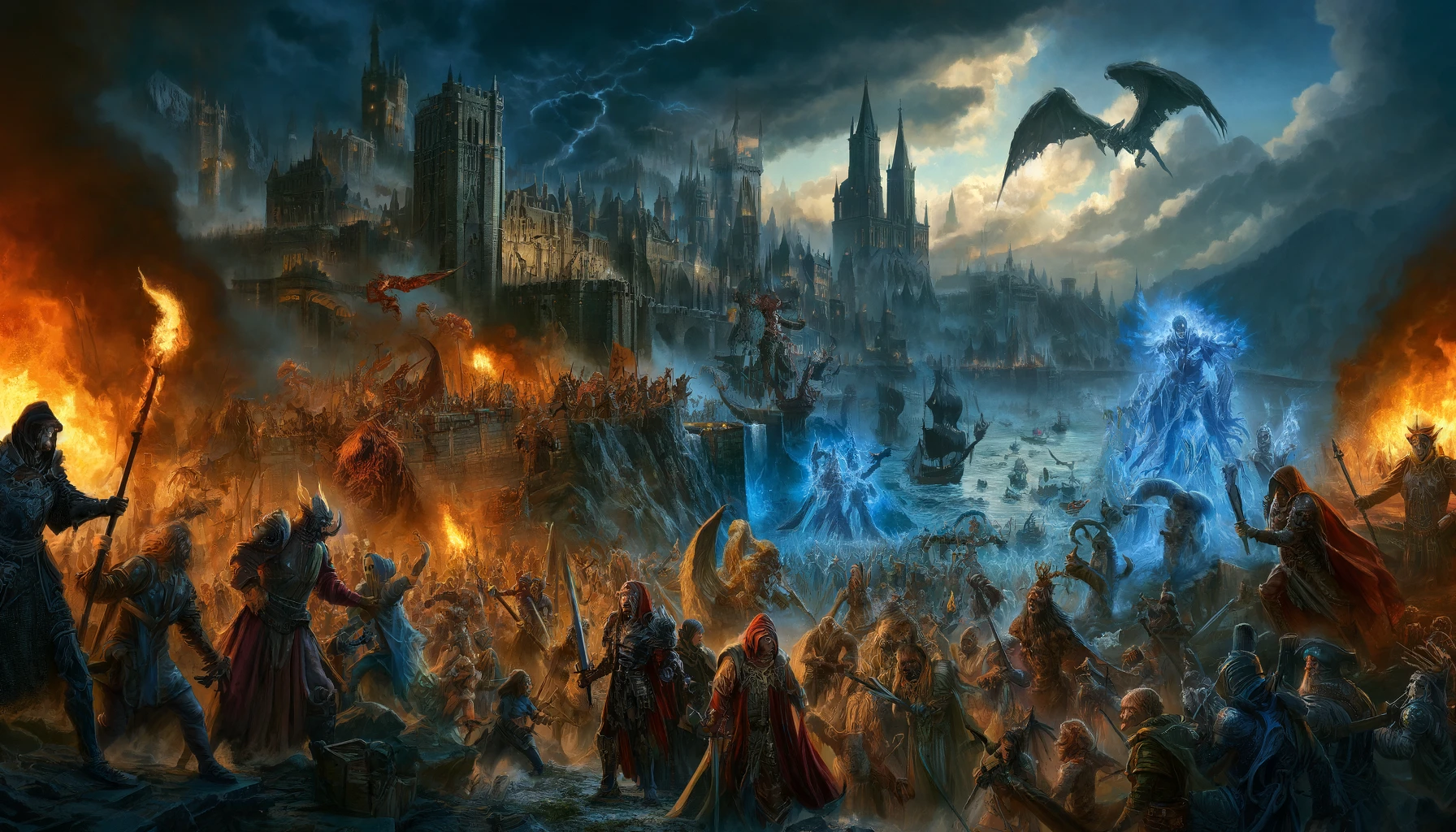
¶ Fiendflesh Siege (Black Echelon Uprising)
Location: Absalom
Date: 4717 AR
Participants: Absalom defenders, Black Echelon, demons, fiendish constructs, Baphomet-worshipping minotaurs
Outcome: Victory for Absalom, abolition of slavery within the city
¶ Description
The Fiendflesh Siege, also known as the Black Echelon Uprising, was a pivotal conflict in Absalom's history, in 4717 AR. The siege involved a coalition of demonic forces and undead invaders, originating from both within and outside the city's walls.
¶ Prelude
The siege was initiated by the undead forces of Taldor's ancient Black Echelon order, which rose from within the city to seize control of strategic locations, including Fort Tempest. This internal threat was soon bolstered by external forces, including a long-sunken armada that surfaced from Absalom Harbor, alongside demonic and minotaur armies encircling the city.
¶ Key Events
- Initial Assaults: Sudden attacks by the undead and the surfacing of the spectral armada created initial chaos.
- Naval Engagement: The resurfaced Black Echelon fleet attempted to take control of the city's harbors.
- Pathfinder Society Involvement: Mysterious activities at the Grand Lodge in the Foreign Quarter, potentially involving magical or arcane interventions.
¶ Leaders and Heroes
- Wynsal Starborn: Appointed as siege lord and later acting primarch, his leadership was crucial in organizing the city's defense.
- Primarch Gyr: Disappeared prior to the siege, sparking a leadership crisis.
- Absalom's First Guard and Freed Slaves: Played significant roles in the city's defense and subsequent social reforms.
¶ Outcome and Aftermath
- Defeat of Invading Forces: The combined efforts of Absalom's defenders repelled the siege, maintaining the city's independence.
- Abolition of Slavery: Wynsal Starborn's edict granted freedom to slaves who defended the city, leading to the abolition of the Flesh Taxes and formal outlawing of slavery in Absalom.
- Social Reforms: The aftermath saw significant social changes, including the rise of the Free Union movement, advocating for workers' rights and further societal reforms.
¶ Legacy
The Fiendflesh Siege not only preserved Absalom's independence but also triggered profound social changes within the city. The abolition of slavery and subsequent social reforms marked a new era in Absalom’s history, reshaping its societal structure and governance. The siege's legacy continues to influence political and social policies in Absalom, making it a defining moment in the city’s storied history.